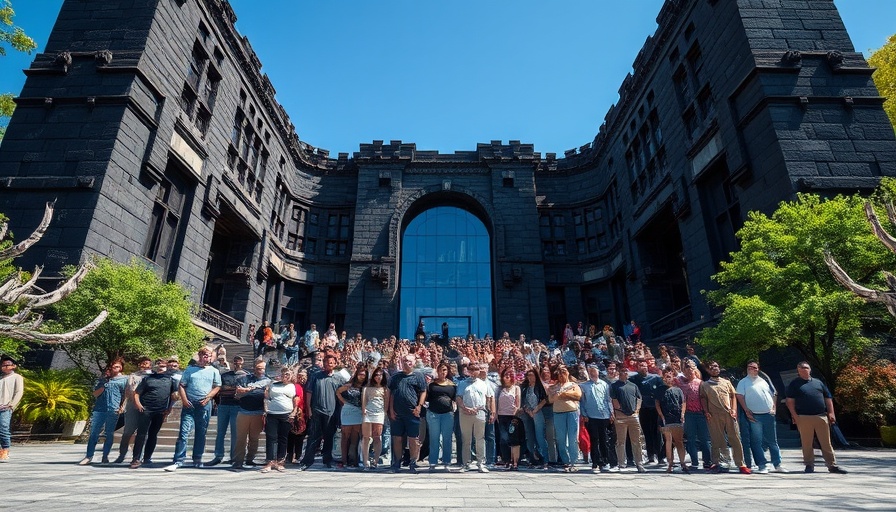
Exploring the Vibrant Textures of Mexico City
The 2025 TxA Design Conference in Mexico City captivated attendees with its theme, "Textura," showcasing not only architectural innovation but also the rich cultural history of the region. A sold-out affair, it drew in eager designers and architects from across Texas who sought inspiration from the city's vibrant aesthetics and community-oriented designs. This year's conference marks a significant shift as it ventured beyond the U.S. borders for the first time, allowing participants to immerse themselves in the bold textures and colors that characterize Mexican architecture.
Day One: Embracing Cultural References
The conference kicked off with a powerful keynote lecture by renowned architect Tatiana Bilbao, whose studio is known for integrating cultural narratives into its design process. Bilbao, along with fellow architects, presented projects that illustrate how the emotional connection to materials can transform mundane objects into significant cultural artifacts. Her approach emphasizes the importance of locality and context, creating structures that resonate on a personal and communal level.
As attendees gathered for the afternoon session at Productora Studio, a common sentiment echoed throughout the discussions: design should go beyond meeting basic client needs. Instead, it should inspire and evoke emotions while responding to the environment. Sketches shared by participants illustrated this ethos, showcasing concepts that combined functionality with aesthetic flair, much in the way that the architecture of Mexico City does.
Day Two: Innovative Perspectives
The second day featured an engaging lecture titled "What Nobody Asks For" presented by Emmanuel Ramirez and Ignacio del Rio from MMX Studio. Their insightful talk focused on how design concepts often allow for unexpected outcomes that surprise and delight clients. This message resonates strongly in today’s market, where the expectations of clients often fall short of the creative possibilities. By encouraging architects to think expansively, they can produce memorable experiences through their works.
Connecting with Nature and Community
Throughout the conference, the interwoven themes of sustainability, wellness, and community reverberated in discussions. Attendees reflected on how architectural endeavors can contribute to society's well-being. Projects that emphasize green spaces and community utilities are not only aesthetically pleasing but also enhance quality of life. As conference participants returned to their respective cities, the discussions around how architecture can serve as a catalyst for local development took on new significance.
Implications for Texas Architecture
The insights gathered from this year's TxA Design Conference have profound implications for architects and designers back home in Texas. The bold colors and textures often seen in Mexico City prompt a reevaluation of conventional design aesthetics in U.S. architecture. Why remain timid with color when striking compositions could inspire fresher ideas? Texas architects have an opportunity to embrace vibrancy while ensuring that their projects integrate sustainable practices and community involvement.
Your Takeaway: Embracing the Bold
As businesses and homeowners consider the future of design and construction, the lessons learned from the TxA Design Conference serve as a guide. Empathy in design and an appreciation for cultural depth can enhance a project’s value beyond mere functionality. Community-oriented spaces that reflect the local culture and prioritize user wellness should remain at the forefront of design initiatives moving forward. If you're involved in construction or development, think about how adopting these principles can elevate your projects and create lasting value.
 Add Row
Add Row  Add
Add 




Write A Comment